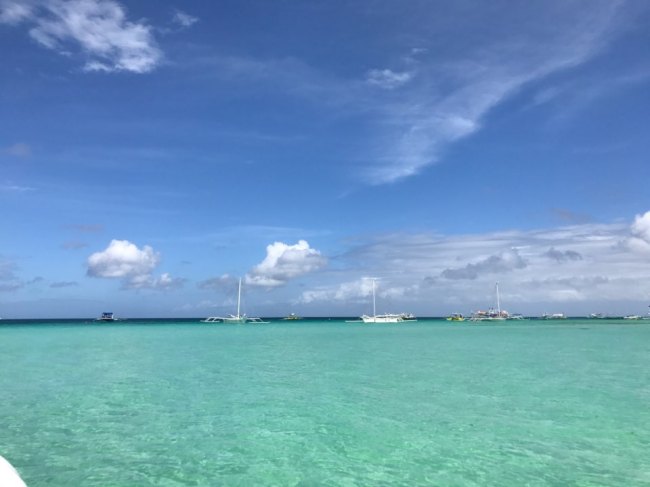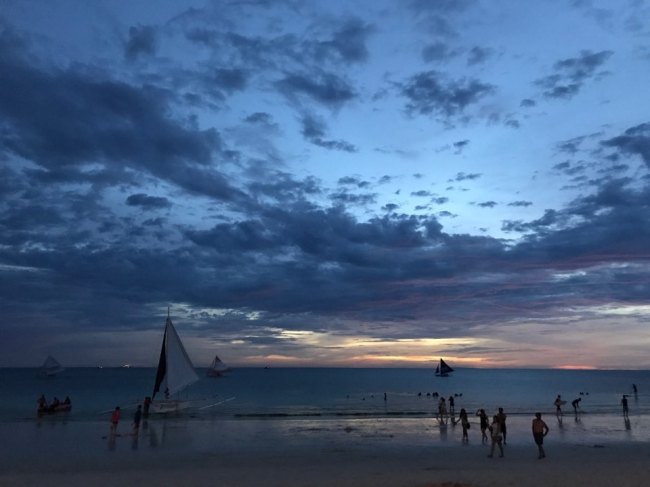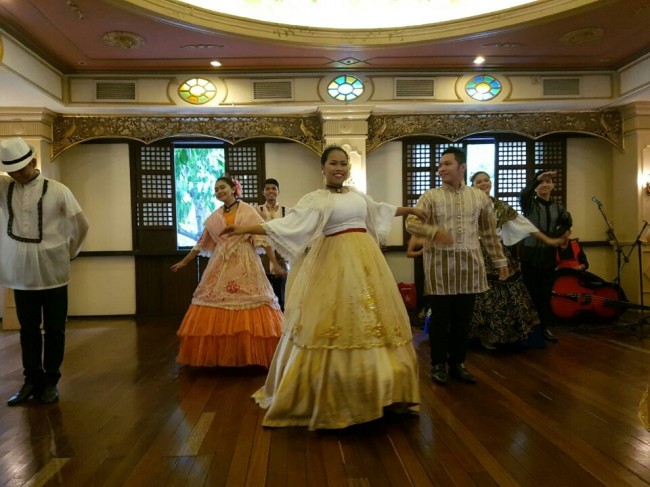Under a cluster of pink and white coral reefs, a small orange fish emerged from among a group of sea anemones swinging their tentacles like a curtain designed to hide a magician preparing a spell for the spectators.
“I’ve just seen Nemo,” said Lee Jong-hyun, 17-year-old high school student who finished scuba-diving with a group of seasoned Filipino divers. “See? It is exactly the same fish as I saw in the movie ‘Finding Nemo’.”
Otherwise known as clownfish or anemonefish, Nemo is one of the most exotic species that the tourists can come across when diving into the sea of Boracay -- the Philippine top destination for tourism and relaxation.
Finding Nemo is only a small part of unique underwater experiences. Holding a piece of bread at the bottom of the sea, Lee and other visitors watched a school of fish nibbling the bread at such a close distance that they could feel the fish biting.
Located about 300 kilometers south of Manila, Boracay is known for its picturesque beach with white powder sand. Indeed, the word “Boracay” is said to have derived from the local word “borac” -- which means white cotton.
 |
Boracay beach. Yeo Jun-suk/The Korea Herald |
The white sandy beach is all the more beautiful against the backdrop of the sunset, whose orange sunlight turns the beach into a glowing golden square after blurring the line between the sea and the sky on the horizon.
Boracay was the first leg of a three-day journey in May organized by the embassy of the Philippines to South Korea. Joining the trip were Seoul-based ambassadors and military attaches from Brazil, Canada, France, Italy, Oman and among others.
Protecting Boracay
According to the statistics from the Malay Municipal Tourism Office, Boracay drew 1,725,483 tourists in 2016, a 10.6 percent increase from a year earlier. South Koreans topped the foreign tourists visiting the island, accounting for about 37 percent of the total number.
The resort island’s popularity has prompted concerns among environmentalists and urban planners, who warned the government against environmental degradation caused by overdevelopment and congestion.
The Philippine Institute of Environmental Planners and Alliance for Safe, Sustainable & Resilient Environments both issued a statement in May, warning that Boracay is at its “stagnation stage,” the fifth stage of the life cycle before a resort reaches a decline or rejuvenation.
“There is a certain limit to what an area can accommodate,” Nathaniel Von Einsiedel, Filipino architect and urban planner, said at a press conference in Manila last month. “And as you know, the more people there are, the more waste they generate.”
 |
Sunset at Boracay beach. Yeo Jun-suk/The Korea Herald |
But the nightlife in Boracay appeared to find a way to live in harmony. Though every bar and club was packed with tourists dancing and drinking, local police stationed at crowded places enforced the ban on littering and other alcohol-related misdemeanors.
“As long as you don‘t make a fuss over the drink, it’s not a big problem,” said a 37-year-old bartender who served B-52 cocktails to a group of tourists. “What’s worth staying in Boracay without enjoying yourself? It’s an island that never sleeps.”
Cultural diversity
Besides the natural wonders in Boracay, there is another feature that makes the Philippines one of the most exotic tourist destinations: Cultural diversity.
The best place to appreciate the diversity is none other than its capital, Manila. Founded in 1571 by the Spanish conquistadors, Manila is one of the oldest cities in the Philippines and was the seat of the powers for colonial rulers.
Spain ruled Manila until it ceded the city to the United States in 1898 after the Battle of Manila. The city was temporarily occupied by Japan during World War II until the Philippines gained independence in 1946.
Manila’s historical and cultural heritage is reflected in the city’s architecture, whose structures were based on a mix of the colonial rulers’ influence as well as precolonial elements of the indigenous Filipino, Chinese and Malay.
“If you look at the buildings in Manila, you can realize there are two quite different elements involved in it. Cathedrals and old government buildings are influenced by the Spanish architecture, and other modern architectures are largely American-style,” said Alvin Bolo, a Filipino tour guide.
There was another element representing the country’s cultural diversity: Traditional dancing. Dressed in traditional clothes in vivid colors, local dancers showcase the country’s diverse social practices during the colonial and pre-colonial times.
 |
Dancers perform a traditional courtship dance at a restaurant in Manila. Yeo Jun-suk/The Korea Herald |
One of them are “Paseo de Iloilo,” a courtship dance showcasing the Filipino way of courting woman through dance. The dance originated from the Visayan Region, one of the three principal geographical divisions of the Philippines.
Considered one of the most popular flirtation dances of the Spanish era, the dance re-enacts the process of “gentlemen competing against each other to win the heart of young lady by exemplifying chivalry, grace, and confidence,” according to Kalilayan Folkloric Group, a folk dance group in the Philippines .
“It’s so classy and exotic,” said Kim Yun-tae, director of Multiculture Museum in Seoul. “It would be very difficult for a lady to resist such a charming move. I think I should learn the dance and tell my kids how to use it."
By Yeo Jun-suk (
jasonyeo@heraldcorp.com)










